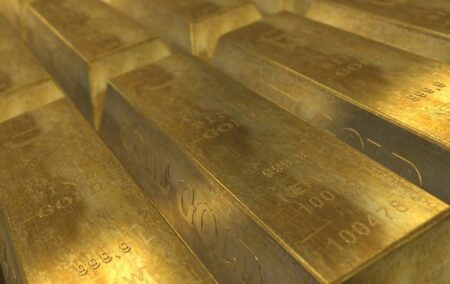On 15 August 1971, the President of the United States at the time, Richard Nixon, took the world off the gold standard.
This was possible because since the end of the Second World War, the world had been on a gold exchange standard in which the US dollar was the world’s reserve currency and the dollar in turn was backed by gold. This was the culmination of more than 57 years of history in which the government desire to spend more, mainly to finance war, led to the abandonment of a commodity standard for money.
Unlike the introduction of the dollar-gold exchange standard in July of 1944, the abandonment of gold did not come about because of well thought-out deliberation. It was something done in panic, as the US government faced the prospect of having to own up to swindling the world and admitting it could not keep its promise to convert $35 into one ounce of gold. The French had already sniffed this out and were demanding their gold.
Many other nations, especially US allies, were content to keep their hypothetical gold in US vaults. Still, this was not enough. The position of ‘exorbitant privilege’ which the Americans found themselves in came about because, after the European powers had bankrupted themselves fighting two world wars, America found itself holding most of the world’s gold (as the main supplier for the European war efforts). Therefore the classical gold standard could not be maintained without these European countries having to declare bankruptcy.
But the troubles started even earlier, with the Great Depression and, earlier still, the First World War. That is why, even before the first shots of the Second World War had been fired, the UK had already abandoned the gold standard twice in the 20th century – first in 1914, in order to freely finance its military contribution to the First World War, and then again in 1931 during the Great Depression. In August 1971 it was war, again, that put the final nail in gold’s coffin.
‘Guns and butter’
By 1971 the US government was deeply involved in the Vietnam War. In the 1960s, under President Lyndon Johnson, Nixon’s predecessor, the US had greatly expanded the welfare state, the so-called ‘guns and butter’ policy. This is the reason some countries like France became sceptical about the US government being able to keep its promise of converting the dollar to gold.
In fact, if we take a look at the history of commodity money (which is the history of money), abandoning the backing for the currency occurs because of the need to finance wars.
This was the case in Vietnam, the two world wars, the American civil war, the Napoleonic wars, the American revolutionary war and so on. Yet this is not what we hear from defenders of fiat (unbacked, government-issued) currency today. Contrary to this history, they tell us that gold is unsuitable because it harms the economy, and that the tendency for prices to fall under a gold standard is the real problem. Government’s desire to spend more than it can collect in taxes is not mentioned, but historically that is the only reason why a gold or silver standard was ever suspended.
Abandoning a commodity standard had never been this global before; even Switzerland left gold in 1999. This is not the first time in history that governments have relied on fiat currency. In each previous case, governments have been forced to go back to a commodity standard not because they liked the discipline of gold or silver, but because the fiat system eventually led to disaster. There is no reason to think that things will be any different now.
One has only to look at the website wtfhappenedin1971 to see that the reliance on fiat currency has been a disaster. Prices have risen year after year, while the wages of workers have remained stagnant in real terms, with the incomes of those at the bottom end of society crashing relative to the incomes of those at the top, who can afford to hedge relentless inflation with assets.
Debt, both government debt and private debt, have ballooned and now governments like those of the US and Japan have no hope of ever being able to repay their debt. The only real option is to rely on inflation to whittle away the debt.
Global inflation
This is where we find ourselves today, with global inflation at 40-year highs (as government measures inflation, this has not always been the same methodology) and interest rates at all-time lows (until recently, 5 000 year lows, to be more precise).
We are now left with the question of whether this unprecedented 50-year experiment, where the entire world relies on unbacked currency, will be the first fiat experiment in all of human history to be a success, or whether as always, countries will eventually be forced to return to some sort of commodity backing for money but with unprecedented pain due to the duration and widespread nature of the current fiat experiment.
[Image: PublicDomainPictures from Pixabay]
The views of the writer are not necessarily the views of the Daily Friend or the IRR
If you like what you have just read, support the Daily Friend

